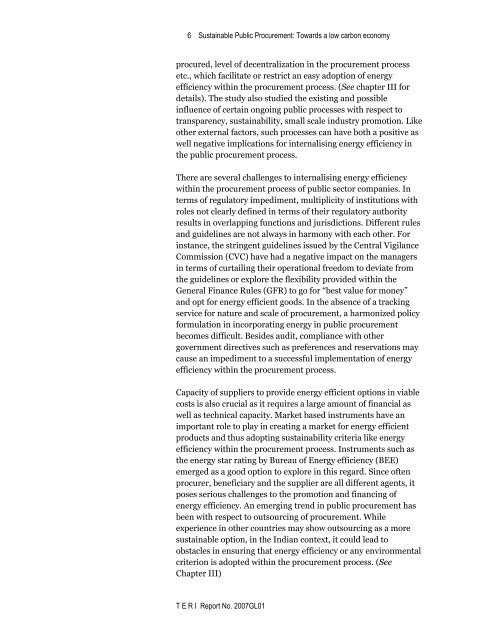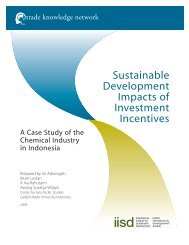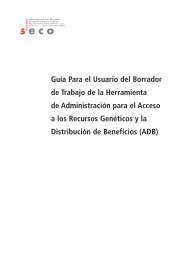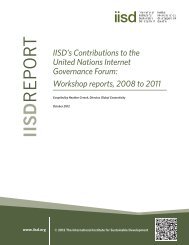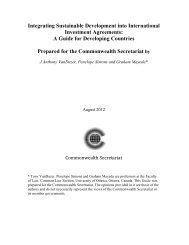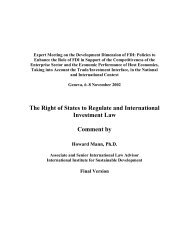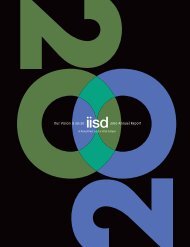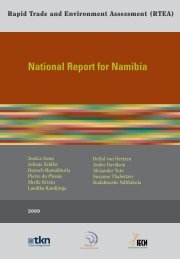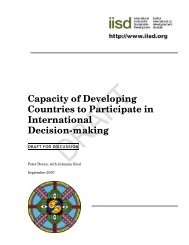Sustainable Public Procurement: Towards a lowâcarbon economy
Sustainable Public Procurement: Towards a lowâcarbon economy
Sustainable Public Procurement: Towards a lowâcarbon economy
Create successful ePaper yourself
Turn your PDF publications into a flip-book with our unique Google optimized e-Paper software.
6 <strong>Sustainable</strong> <strong>Public</strong> <strong>Procurement</strong>: <strong>Towards</strong> a low carbon <strong>economy</strong><br />
procured, level of decentralization in the procurement process<br />
etc., which facilitate or restrict an easy adoption of energy<br />
efficiency within the procurement process. (See chapter III for<br />
details). The study also studied the existing and possible<br />
influence of certain ongoing public processes with respect to<br />
transparency, sustainability, small scale industry promotion. Like<br />
other external factors, such processes can have both a positive as<br />
well negative implications for internalising energy efficiency in<br />
the public procurement process.<br />
There are several challenges to internalising energy efficiency<br />
within the procurement process of public sector companies. In<br />
terms of regulatory impediment, multiplicity of institutions with<br />
roles not clearly defined in terms of their regulatory authority<br />
results in overlapping functions and jurisdictions. Different rules<br />
and guidelines are not always in harmony with each other. For<br />
instance, the stringent guidelines issued by the Central Vigilance<br />
Commission (CVC) have had a negative impact on the managers<br />
in terms of curtailing their operational freedom to deviate from<br />
the guidelines or explore the flexibility provided within the<br />
General Finance Rules (GFR) to go for “best value for money”<br />
and opt for energy efficient goods. In the absence of a tracking<br />
service for nature and scale of procurement, a harmonized policy<br />
formulation in incorporating energy in public procurement<br />
becomes difficult. Besides audit, compliance with other<br />
government directives such as preferences and reservations may<br />
cause an impediment to a successful implementation of energy<br />
efficiency within the procurement process.<br />
Capacity of suppliers to provide energy efficient options in viable<br />
costs is also crucial as it requires a large amount of financial as<br />
well as technical capacity. Market based instruments have an<br />
important role to play in creating a market for energy efficient<br />
products and thus adopting sustainability criteria like energy<br />
efficiency within the procurement process. Instruments such as<br />
the energy star rating by Bureau of Energy efficiency (BEE)<br />
emerged as a good option to explore in this regard. Since often<br />
procurer, beneficiary and the supplier are all different agents, it<br />
poses serious challenges to the promotion and financing of<br />
energy efficiency. An emerging trend in public procurement has<br />
been with respect to outsourcing of procurement. While<br />
experience in other countries may show outsourcing as a more<br />
sustainable option, in the Indian context, it could lead to<br />
obstacles in ensuring that energy efficiency or any environmental<br />
criterion is adopted within the procurement process. (See<br />
Chapter III)<br />
T E R I Report No. 2007GL01


